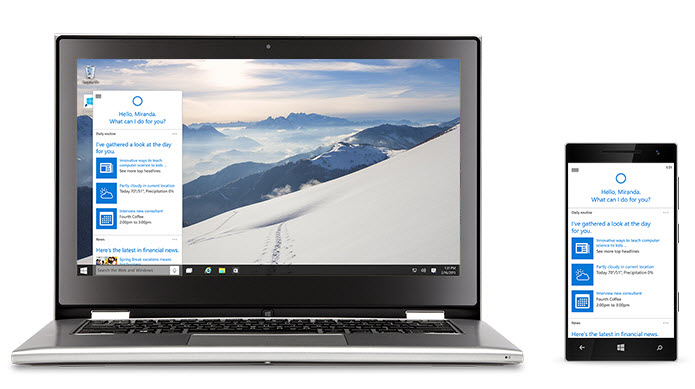Microsoft goes public with its list of planned Windows 10 editions

Microsoft is going public with its list of planned SKUs, or editions, that it will make available for Windows 10 PCs, tablets, phones and embedded devices ahead of this summer's planned launch of the operating system.

When Microsoft introduced Windows 8 in 2012, there were four main Windows 8 SKUs: The Windows 8 consumer SKU; Windows 8 Pro SKU for tech enthusiasts and business professionals; Windows RT, the version of Windows designed to run on ARM-based hardware; and Windows 8 Enterprise. Microsoft subsequently added a Windows 8.1 for Education SKU.
Microsoft is not yet disclosing the standalone pricing or the detailed feature set and licensing specifics of its Windows 10 SKUs.
As Microsoft said months ago, the company plans to make Windows 10 available as a free upgrade for consumers running Windows 7, Windows 8.x and Windows Phone 8.1 for the first year following availability of the Windows 10 operating system. Some business users -- those who want Windows 10 Pro -- also will qualify for the first-year-free deal, but enterprise customers will not, Microsoft execs have said.
Here's the Windows 10 SKU line-up:
Windows 10 Home: The consumer-focused desktop edition. This will include the core Windows 10 features, such as the Edge browser, Continuum tablet-mode for touch-capable devices; Cortana integration; free Photos, Maps, Mail, Calendar; Music and Video apps; and Windows Hello face-recognition/iris/fingerprint log-in for devices that support those technologies. On devices with screen sizes of 10.1 inches or less, users also will get Universal Office apps for free, once they are available.
Windows 10 Mobile: This is the SKU for Windows Phones and small Intel- and ARM-based tablets. ("Small" means between three and 7.99 inches in size.) This SKU will include the core Windows 10 features; free Universal Office apps once they are available; and support for Continuum for Phone, allowing customers to use phones as PCs connected to larger screens (but only on new devices supporting certain screen resolutions).
Windows 10 Mobile Enterprise: This is a version of Windows 10 Mobile for volume licensing customers only. According to the blog post, this SKU incorporates the latest security and feature updates to Windows 10 once they are available. There's no word if users will be able to delay these updates in order to test/stagger their delivery, which is offered under Windows Update for Business.
Windows 10 Pro: A desktop version of Windows 10 for mobile workers, tech enthusiasts and other power users. This version is one of at least two -- the other being Windows 10 Enterprise -- that will allow users to opt for Windows Update for Business. Windows Update for Business will allow admins to opt to not receive all feature and security updates from Microsoft immediately after they are available.
Windows 10 Enterprise: This is the Enterprise version of Windows 10 that is available to volume-licensing customers. This version is not part of Microsoft's first-year-free upgrade offer, but those with volume-licensing Software Assurance customers will be able to move to this version as part of their licensing terms. The Enterprise version customers get access to the Long Term Servicing Branch of Windows 10 -- which allows them to opt to receive security fixes only and no new features as Microsoft rolls them out.
More Windows 10
Windows 10 Education: This is the version for staff, administrators, students and teachers, and will be available through academic Volume Licensing. Microsoft officials say there will be paths for schools and students to upgrade from Windows 10 Home and Pro, but don't yet provide details on that front.
On the Windows 10 embedded device front, Microsoft also is planning to deliver Windows 10 Enterprise and Windows 10 Mobile Enterprise versions of the operating system for handheld terminals, ATMs, point of sale and other similar devices, as well as a Windows 10 IoT Core for small footprint, low-cost devices.
Microsoft execs still aren't providing granular details about upgrades, such as whether those who go for the first-year-free deal with SKUs like Windows 10 Pro will have the option of delaying/staggering their feature and security updates, the way enterprise users will be able to. Another unanswered question: Will Windows Phone users who are running the Windows 10 Mobile (and not Mobile Enterprise) version still be able to use Intune and Microsoft's Enterprise Mobility Suite to lock down their devices? Microsoft isn't yet saying.
"The Long Term Servicing branch being an enterprise level feature is the most interesting news here because that's the gateway for businesses who want to continue doing business as usual," said Wes Miller, an analyst with Directions on Microsoft.